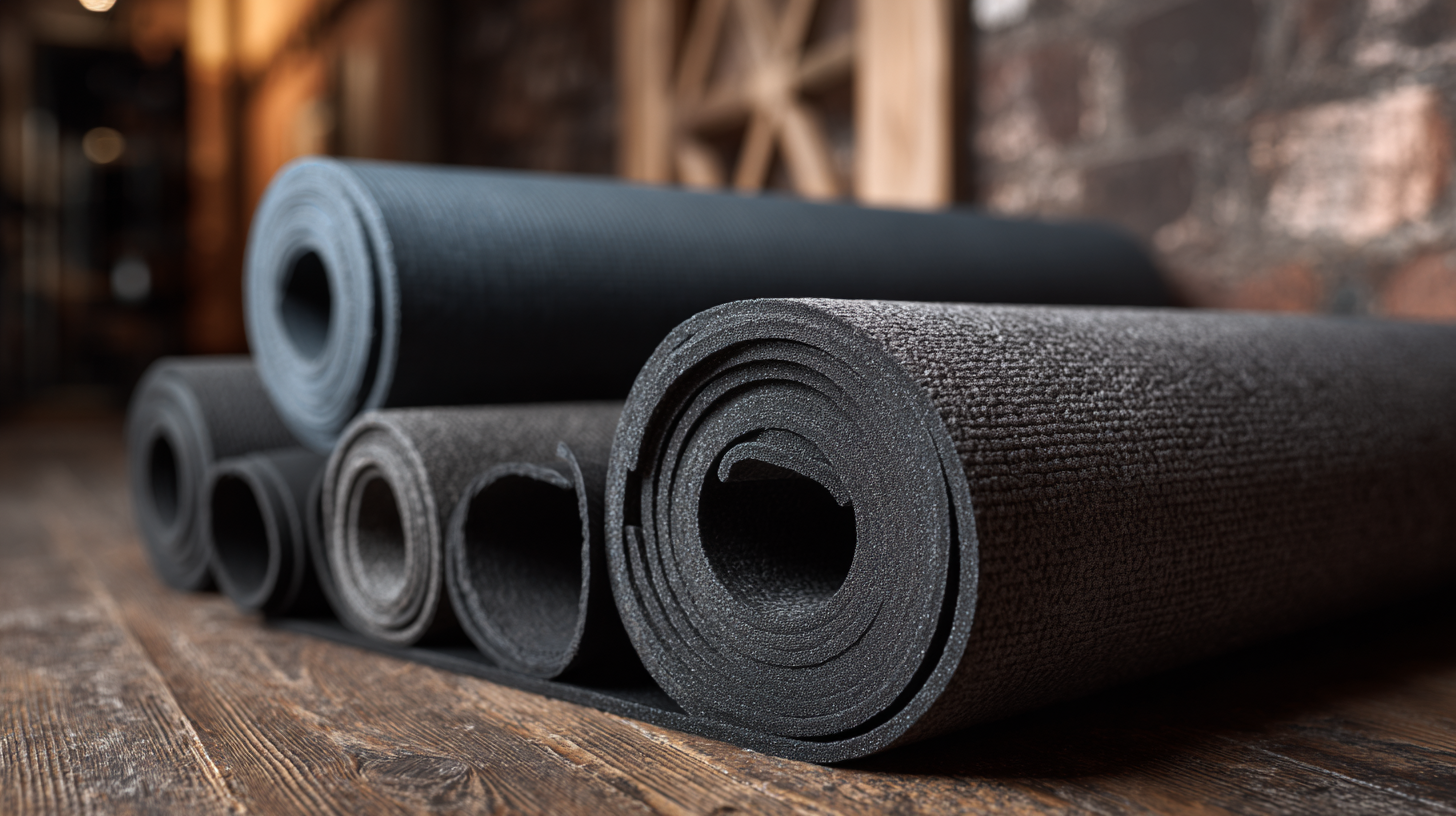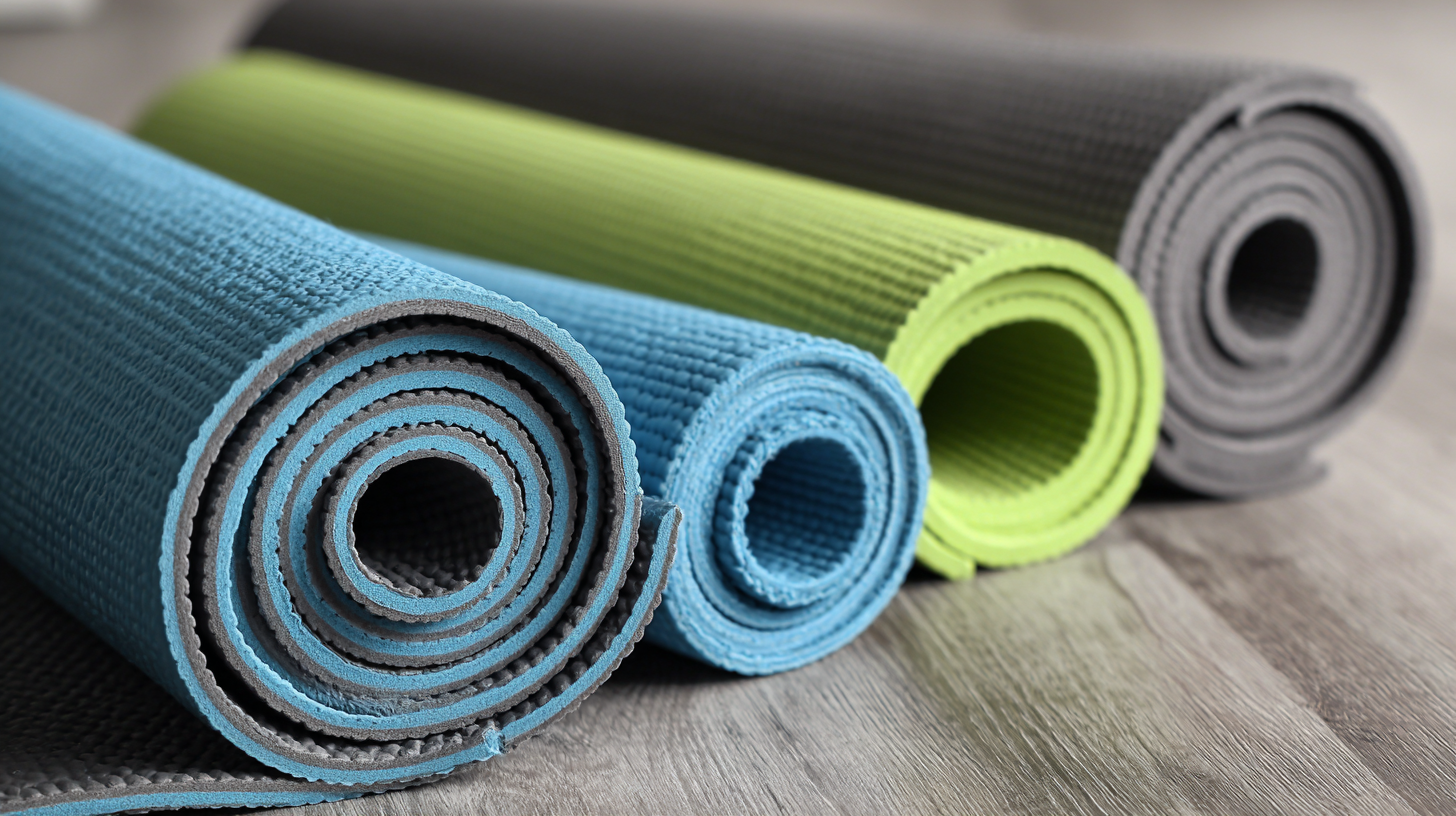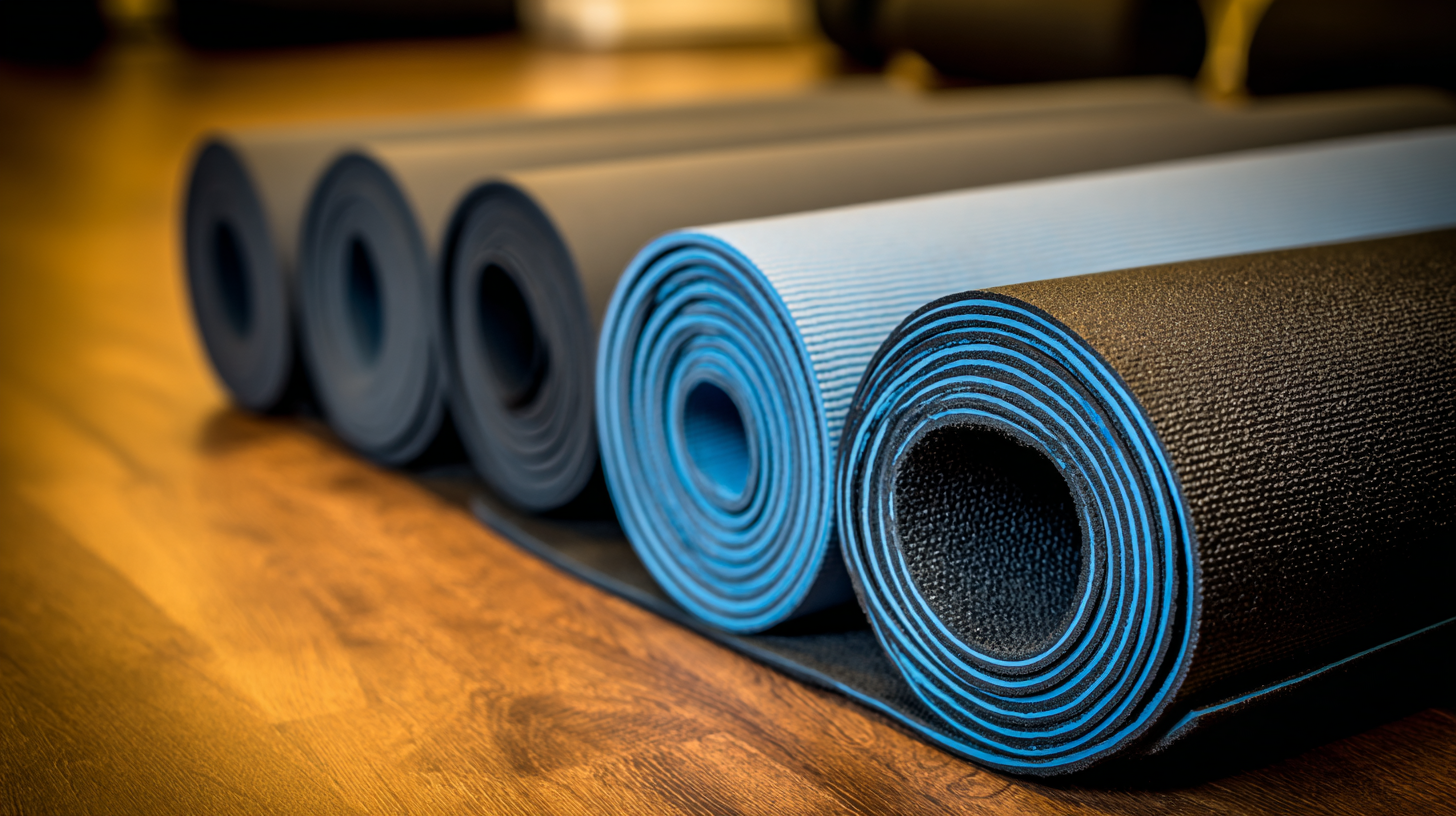When it comes to creating an effective and safe fitness space, the importance of choosing the right Workout Floor Mats cannot be overstated. These mats serve as a foundational element for a variety of exercises, providing cushioning, support, and safety while helping to define your workout area. With countless options available on the market, selecting the best mats tailored to your specific activities can significantly enhance your workout experience. From yoga and Pilates to high-intensity interval training and weightlifting, the right mats not only protect your flooring but also reduce the risk of injury by offering grip and stability.

In this blog, we will explore the essential factors to consider when choosing the perfect Workout Floor Mats for your fitness space, ensuring you make an informed decision that aligns with your health and wellness goals.
When selecting workout floor mats for your home gym, there are several important factors to consider. First and foremost, you need to assess the type of exercises you will be doing. If your routine includes high-impact workouts or heavy equipment, it’s crucial to choose mats that provide adequate cushioning and support. Additionally, look for mats with excellent durability to withstand frequent use and resist wear and tear over time.
Another key factor is the material of the mats. Foam mats are ideal for yoga and low-impact exercises, while rubber mats are better suited for weightlifting and high-intensity workouts. Make sure to select mats that are easy to clean and maintain, as this will keep your fitness space hygienic and pleasant to use.
Tips: Consider the thickness of the mat; thicker mats provide more cushioning but may be less stable for certain exercises. Additionally, think about the size of your workout space; larger mats can accommodate a range of movements and equipment, while interlocking tiles can offer versatility in layout. Finally, choose mats with non-slip surfaces to ensure safety during your workouts.

When selecting the best workout floor mats for your fitness space, it's essential to consider the types of materials available, as they directly impact both performance and comfort. Common materials include foam, rubber, and vinyl, each offering unique benefits.
Foam mats are lightweight and provide excellent cushioning, making them ideal for activities like yoga and Pilates. Rubber mats, on the other hand, are highly durable and offer superior traction, making them suitable for high-intensity workouts and weightlifting.
Vinyl mats are also a viable option, especially for those seeking easy maintenance and water resistance.
Thickness is another critical factor that influences the effectiveness of workout mats. Thicker mats generally provide better cushioning and support, reducing the risk of injury during floor exercises. However, they can also be bulkier and harder to store. A thickness of around 6mm is typically recommended for general workouts, while specialized activities such as martial arts or heavy lifting may benefit from mats that are 10mm thick or more. Lastly, durability is key when investing in workout mats; look for mats that can withstand repeated use without wear and tear, ensuring that your fitness space remains safe and functional for the long haul.
When setting up a fitness space, the choice of floor mats can significantly impact workout safety and performance. A report by the International Journal of Sports Science and Coaching highlights that proper flooring can reduce the risk of injuries by approximately 30%. This is particularly vital for high-impact exercises, where the right mat can absorb shock, providing a safer environment for users. High-density foam and rubber mats create a non-slip surface that can significantly reduce the occurrence of slips and falls during dynamic movements.
Moreover, the influence of floor mats extends beyond injury prevention; they can enhance performance as well. According to a study by the National Strength and Conditioning Association, athletes reported improved stability and comfort when training on specialized mats designed for high-intensity workouts. This additional support allows for better focus on technique and form, ultimately leading to improved overall workout efficiency. By investing in quality workout floor mats, fitness enthusiasts can not only protect themselves but also elevate their training experience, making an informed choice essential for any fitness space.
| Mats Type | Material | Thickness (inches) | Shock Absorption | Slip Resistance | Price Range (USD) |
|---|---|---|---|---|---|
| Foam Mats | EVA Foam | 0.5 - 1 | High | Moderate | 20 - 50 |
| Rubber Mats | Recycled Rubber | 3/8 - 1/2 | Very High | High | 40 - 100 |
| Carpet Tiles | Polyester | 0.25 - 0.5 | Low | Moderate | 30 - 80 |
| Cork Mats | Natural Cork | 0.25 | Moderate | High | 35 - 90 |
When selecting workout floor mats for your fitness space, the balance between
cost and quality is paramount. According to the International Health, Racquet & Sportsclub Association (IHRSA), the
global fitness industry reached $96 billion in revenue in 2020, indicating a surge
in home fitness investments. With this trend, consumers must be discerning in their purchases to ensure they obtain
both affordability and durability. Quality workout mats, typically made from materials like high-density foam or
rubber, can range from $50 to $150, while cheaper alternatives may seem
attractive but often wear out quickly. A study by the Exercise Equipment Association found that low-quality mats
are replaced 30% more frequently, ultimately costing more over time.
It’s crucial to assess the specific needs of your fitness space when evaluating options. For instance, if you're
engaging in high-impact workouts, opting for thicker mats (around 3/4 inch)
can provide better cushioning and stability, thereby preventing injuries. Research from the National Institute of
Health suggests that inadequate flooring can lead to increased joint stress, impacting long-term health. Thus,
investing in a quality mat not only enhances your workout experience but also supports your wellbeing in the
long run.
Choosing the right gym flooring is crucial for injury prevention in any fitness space. Statistics reveal that approximately 60% of gym injuries are related to improper flooring. Studies show that high-impact activities, such as weightlifting and plyometric exercises, can significantly increase the risk of injuries if the flooring does not provide adequate shock absorption. A quality workout mat can reduce the impact on joints by up to 30%, helping to preserve long-term physical health for athletes of all levels.

Tip: When selecting a workout floor mat, prioritize materials that offer both resilience and grip. Look for mats made from high-density foam or rubber, which not only cushion impacts but also enhance stability.
Another aspect to consider is the flooring's maintenance and hygiene. Reports indicate that dirty or poorly maintained gym floors contribute to an increased risk of slips and falls, contributing to 25% of all exercise-related injuries. Choosing materials that are easy to clean can help reduce these risks and ensure a safer workout environment.
Tip: Invest in mats with antimicrobial properties or those that can be easily wiped down to maintain a clean training area, supporting both health and safety for you and fellow gym-goers.
